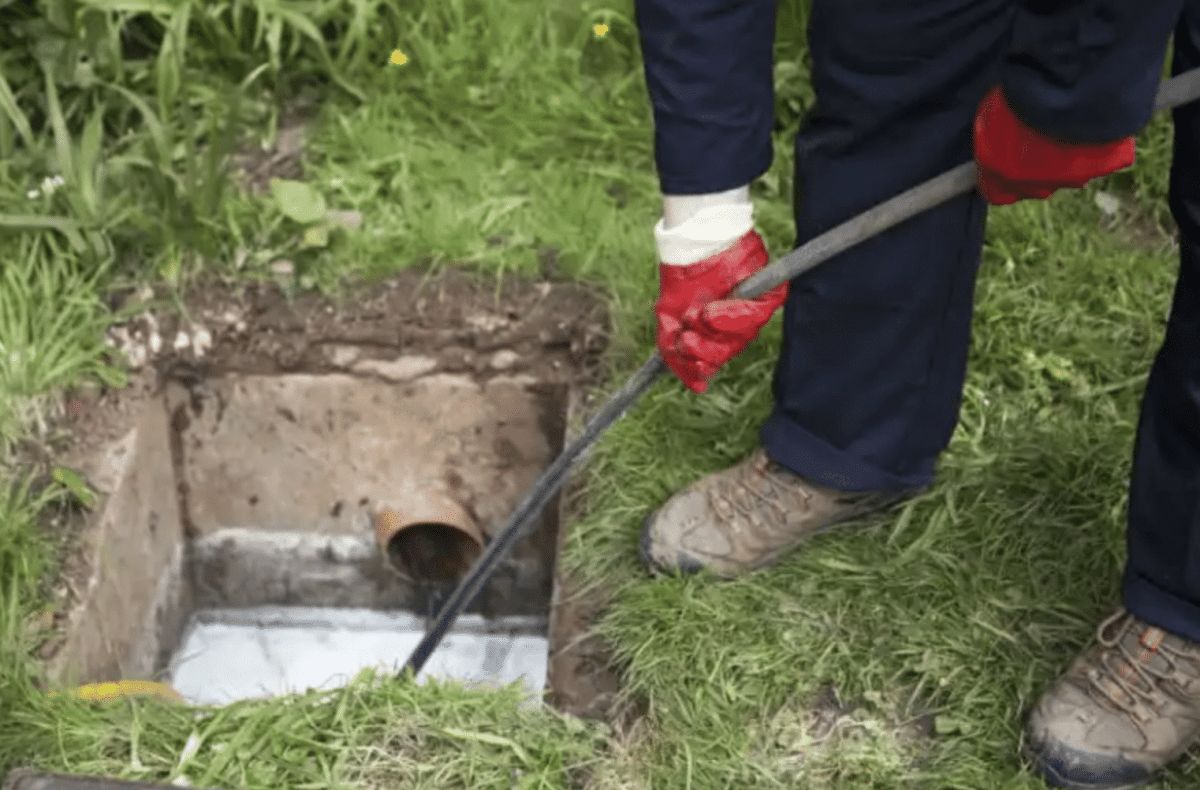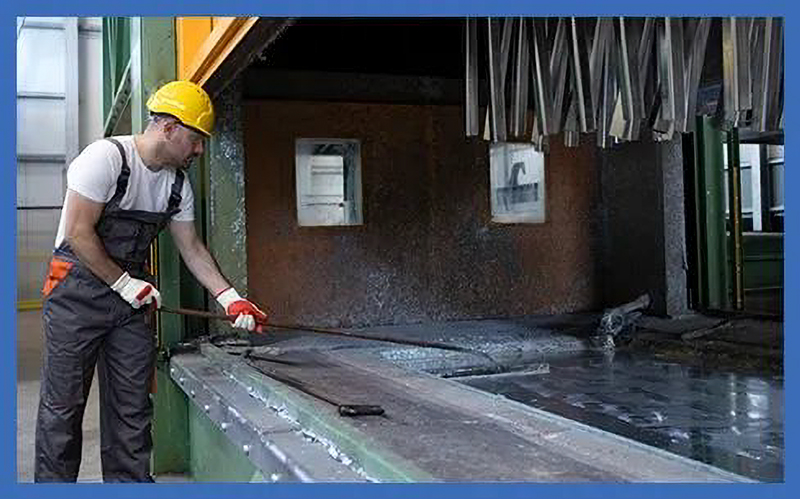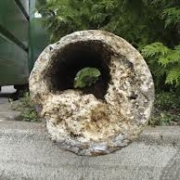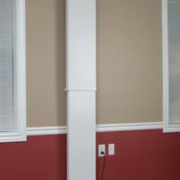Preventing Water Damage in Your Home Basement Atlanta, GA
Your home’s basement can be a valuable living or storage space, but it is also one of the most vulnerable areas when it comes to water damage. Water infiltration can cause extensive damage, leading to structural issues, mold growth, and the loss of valuable possessions. However, with proactive measures and proper maintenance, you can safeguard your basement against water damage. In this article, we will explore some essential steps to prevent water damage in your home basement.

1. Exterior Maintenance: Shielding Your Basement from Water Intrusion
Exterior maintenance is the first line of defense in preventing water damage in your home basement. The area surrounding your home plays a crucial role in directing water away from the foundation, ensuring that it remains dry and secure. Neglecting these exterior elements can lead to disastrous consequences, including basement flooding and costly repairs. Let’s dive deeper into the essential aspects of exterior maintenance to safeguard your basement from water intrusion.
Gutters and Downspouts: The Unsung Heroes
While often overlooked, gutters and downspouts are unsung heroes when it comes to preserving the integrity of your home’s foundation. Their primary function is to collect rainwater from the roof and direct it away from the building. Regularly cleaning and inspecting your gutters and downspouts is essential to ensure they are free from debris and functioning correctly. Leaves, twigs, and other debris can accumulate over time, causing clogs that obstruct the flow of water. When water cannot drain properly, it overflows and cascades down the sides of your home, increasing the likelihood of water seeping into your basement.
Consider installing gutter guards to prevent debris from entering and clogging the gutters. Gutter guards can save you time and effort on maintenance, and they are an excellent investment to protect your home from water damage.
Downspout Extensions: Steer Water Away
The journey of water doesn’t end with the gutters; it continues through the downspouts. To ensure maximum protection for your basement, it is crucial to extend the downspouts’ reach. Downspouts should direct water at least 5 to 10 feet away from the foundation. You can use downspout extensions or splash blocks to achieve this. By doing so, you prevent pooling around the foundation and minimize the risk of water infiltrating your basement.
Foundation Inspection: Catching Trouble Early
Your foundation is the backbone of your home, and any vulnerabilities can lead to significant water damage. Regularly inspect your foundation for cracks, gaps, and signs of wear. Over time, the soil around the foundation can settle or shift, creating stress on the concrete or masonry. This stress can manifest as cracks, which may allow water to seep into your basement during heavy rains or snow melts.
If you notice any cracks or gaps, address them promptly. Use an appropriate sealant or hydraulic cement to fill them in and prevent water intrusion. It is crucial to act fast as even minor cracks can exacerbate over time and lead to substantial structural issues.
Landscaping and Grading: Guiding Water Away
The grading around your home has a significant impact on water drainage. If the ground around your foundation slopes toward the house, water will accumulate and find its way into your basement. Proper grading requires that the ground slopes away from the foundation, directing water flow away from your home.
Consider consulting a professional landscaper or contractor to assess and adjust the grading if necessary. They can help you implement strategic landscaping solutions to ensure that rainwater flows away from your foundation. These may include creating gentle slopes, installing swales or berms, or using permeable materials to encourage water absorption.
Rainwater Harvesting and Diversions: Environmental and Practical Benefits
Besides preventing water damage to your basement, you can also consider rainwater harvesting and diversion systems. Rainwater harvesting involves collecting rainwater from your roof, which can be used for various non-potable purposes, such as watering plants, washing cars, or flushing toilets. By harvesting rainwater, you reduce the amount of water flowing around your foundation, minimizing the risk of water infiltration and wet basement.
Rainwater diversion systems, on the other hand, direct rainwater away from vulnerable areas of your property. They can include French drains, catch basins, and dry wells strategically placed to channel rainwater away from your home and basement.
2. Proper Grading: The Essential Foundation for a Dry Basement
When it comes to protecting your home basement from water damage, proper grading is an indispensable factor. The term “grading” refers to the slope or angle of the ground surrounding your home’s foundation. It plays a critical role in directing rainwater away from your house, ensuring that water flows away from your basement rather than towards it. Proper grading not only helps prevent water infiltration but also contributes to the overall health and longevity of your home’s foundation. Let’s explore the importance of proper grading and the steps you can take to ensure your basement remains dry and secure.
The Significance of Proper Grading:
Improper grading can have severe consequences for your home’s foundation and, by extension, your basement. When the ground around your home slopes towards the foundation, rainwater, snowmelt, or even excess irrigation water can accumulate near the waterproofing your basement and walls. This creates hydrostatic pressure, pushing water against the foundation and potentially finding its way into cracks, gaps, or porous materials.
If left unchecked, this water infiltration can lead to a range of problems, including:
1. Basement Flooding: Accumulated water can seep through basement walls and floors, causing flooding and extensive water damage to your possessions and property.
2. Foundation Damage: Excess moisture can weaken the foundation over time, leading to cracks, settlement, and compromised structural integrity.
3. Mold and Mildew Growth: Damp and humid conditions in the basement provide an ideal breeding ground for mold and mildew, leading to health hazards and costly remediation efforts.
4. Sump Pump Overload: An overwhelmed sump pump may fail to keep up with the excessive water, leading to basement flooding.
Steps to Achieve Proper Grading:
Achieving proper grading around your home is essential for effective water drainage systems and protection against basement water damage. Here are some steps you can take to ensure your home has the right grade:
1. Consult a Professional: Consider consulting a landscaping professional or a contractor experienced in drainage solutions. They can assess your property’s current grading and drainage system and provide expert guidance on necessary adjustments.
2. Identify Current Grading: Start by identifying the current grade around your home. Walk around the exterior of your property, paying attention to how the ground slopes in different areas.
3. Create a Positive Slope: The ideal grading should have a positive slope, meaning that the ground should gradually slope away from your home’s foundation. Aim for at least a 5% slope, where the ground drops five inches over every square foot for the first ten feet from the foundation.
4. Use Fill Dirt and Topsoil: If your property lacks the necessary slope, you may need to add fill dirt and topsoil to create the proper grading. This process may involve excavating areas around the foundation and adding soil to build up the desired slope.
5. Avoid Adding Soil Against the Foundation: When adding fill dirt or topsoil, be cautious not to pile it directly against the foundation walls. This can create a new problem by directing water towards the basement instead of away from it.
6. Install French Drains: In some cases, where achieving proper grading is challenging, installing French drains can be an effective solution. French drains are perforated pipes placed in trenches filled with gravel to redirect water away from the foundation.
7. Rain Gardens and Swales: Consider implementing rain gardens or swales in your landscaping design. These landscape features collect and absorb rainwater, reducing the amount of runoff that reaches your foundation.
8. Monitor and Adjust: Regularly inspect and monitor your property’s grading to ensure it remains effective in diverting water away from your home. Over time, settling and erosion may alter the grade, requiring periodic adjustments.
3. Seal Cracks and Gaps: Building a Strong Barrier Against Water Intrusion
Sealing cracks and gaps in your basement walls and foundation is a critical step in preventing water infiltration and maintaining a dry and secure living or storage space. Even the tiniest openings can allow water to seep into your basement, leading to extensive water damage, mold growth, and compromised structural integrity. By proactively identifying and sealing these vulnerabilities, you create a robust barrier that protects your basement from potential water-related issues. Let’s delve deeper into the importance of sealing cracks and gaps and the methods you can employ to fortify your already waterproof basement walls against water intrusion.
The Dangers of Unsealed Cracks and Gaps:
Cracks and gaps in your basement walls and foundation may seem insignificant, but they can have significant consequences if left unaddressed. During heavy rains, groundwater rises, and hydrostatic pressure increases against your basement walls. In such conditions, water seeks out any possible entry point, including the smallest openings in the foundation. Common entry points include:
1. Wall Cracks: Cracks can form due to the settling of the foundation, temperature fluctuations, or hydrostatic pressure. They provide an easy pathway for water to enter your basement.
2. Floor Cracks: Cracks in the basement concrete floor that can occur due to the natural curing process of concrete or shifting soil beneath the foundation. Water can penetrate through these cracks, especially during periods of heavy rainfall.
3. Window Wells: Improperly sealed window wells can accumulate water, which can then seep into the basement through gaps between the window frame and the foundation.
4. Pipes and Utility Penetrations: Gaps around pipes, utility lines, and vents that penetrate the basement walls can be entry points for water infiltration.
5. Cove Joint: The joint where the concrete basement wall meets the floor (cove joint) can be susceptible to water seepage if not properly sealed.
Methods of Sealing Cracks and Gaps:
Sealing cracks and gaps in your basement requires thorough inspection, the right materials, and proper techniques. Here are some effective methods to seal these vulnerabilities:
1. Epoxy or Polyurethane Injection: For sealing small to medium-sized cracks, epoxy or polyurethane injection is a popular and effective method. These materials fill the crack entirely, creating a full exterior waterproofing barrier and preventing further water intrusion.
2. Hydraulic Cement: Hydraulic cement is a quick-setting material used to seal larger cracks and actively leaking areas. It expands as it cures, ensuring a tight seal against water intrusion.
3. Mortar Repair: For cracks and gaps in mortar joints, using mortar repair is a suitable solution. Properly filling and resealing mortar joints can help prevent water seepage.
4. Weather Stripping: Weather stripping is ideal for waterproofing and sealing gaps around doors and windows. Applying weather stripping ensures a tight seal and prevents water from entering the basement during heavy rains.
5. Silicone Caulk: Silicone caulk is a versatile sealant that can be used for various gaps and cracks around utility penetrations, cove joints, and window wells. It is waterproof coating provides excellent water resistance and flexibility.
Professional Waterproofing Services:
If your basement experiences persistent water infiltration, or if you want to ensure comprehensive protection, consider hiring a professional waterproofing service. These experts can provide a thorough assessment of your basement’s vulnerabilities and apply advanced, waterproofing products and techniques to fortify your basement’s defenses against water intrusion.
Building a Waterproof Fortress: Safeguarding Your Basement from Water Damage
In conclusion, safeguarding your home basement against water damage is a vital aspect of maintaining a safe, healthy, and secure living or storage space. Water infiltration can lead to severe consequences such as structural issues, mold growth, and the loss of valuable possessions. However, by implementing proactive measures and following essential steps, you can significantly reduce the risk of water damage waterproof your basement and create a robust defense against potential water-related issues.
Starting with exterior maintenance, ensure that your gutters and downspouts are clear of debris and direct water away from the foundation. Proper grading is crucial for water drainage, and a positive slope around your home will guide water away from your basement. Additionally, seal cracks and gaps in your basement walls and foundation to prevent water from finding entry points.
Installing a sump pump is an essential investment in protecting your basement. ThisWaterproofing-inspector mechanical device acts as your basement’s water guardian, automatically pumping out excess water and preventing flooding during heavy rains or groundwater seepage. Regularly testing and maintaining the sump pump ensure its effectiveness when needed most.
Professional waterproofing and using water-resistant materials during renovations or finishing will provide additional layers of protection against water infiltration. Adequate ventilation, dehumidifiers, and monitoring foundation drains are all part of a comprehensive approach to keep the interior of your basement dry and free from moisture-related issues.
Remember the importance of regular maintenance. Periodically inspect your basement for signs of water infiltration, leaks, or musty odors, addressing any issues promptly before they escalate into more significant problems. Prevention is always more cost-effective and less stressful than dealing with the aftermath of water damage.
By following these guidelines and putting in the effort to protect your basement, you can ensure its longevity and maintain a comfortable, safe environment for you and your family. A dry and secure basement provides peace of mind and preserves the value of your property. Embrace these preventive measures, and your basement will become a reliable extension of your home, offering endless possibilities for living, storage, and recreation while standing strong against the threat of water damage.
Contact the Professionals at Everdry Basement Waterproofing Atlanta Today! (678) 741-2900






